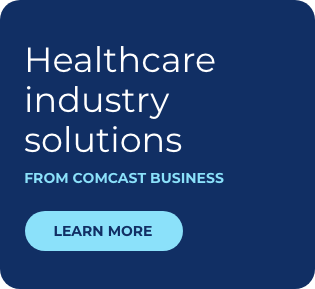An Engaged Patient is a Healthier Patient

Doctor/patient relationships are stronger today than ever before. Patients take a more active part in their own healthcare, and providers are now required to engage more directly with patients as well as ancillary service providers including specialists, payers, pharmacies, laboratories and more. Advanced diagnostics, communications and data technologies are driving this enhanced exchange of information, making it more important than ever for healthcare IT professionals to take a strategic view of their networking infrastructure.
How can providers use technology to help patients become more engaged in their own healthcare?
Patient portals are an excellent example. Using portals, patients can confirm appointments, fill out medical and social history forms, update records and pay outstanding balances. Online patient portals help chronically ill patients remain engaged in their care by allowing them to track appointments, test and lab results, medications and doctors’ notes. Using provider-supplied tablets at the point of care, patients can sign up and access the portal via the provider’s WiFi and have a staff member demonstrate how to use the portal.
In the future, patient portals will evolve with additional functions like secure instant messaging and with unification that allows patients to access one common portal for every healthcare provider they have. Before that happens, providers will need to address portal security issues to assure patients that their sensitive health information will not be accessible to outsiders.
To realize the full potential of patient portals, providers must find a way to share data and networks and integrate the portal with electronic medical records systems. Plus, the 24x7 nature of patient portals requires fast and robust data connections as more and more patients sign up and use the portals to review results and download files and videos.
How are providers using video technology to serve patients both in the hospital and at home?
Video has become an important format for educating patients, especially on treatment and recovery instructions. Providers are using video to communicate about what to expect during surgeries and treatments, proper medication protocols, post-discharge instructions, and tips for caregivers, such as how to transfer patients to and from a vehicle, bed or bathtub.
Video can be delivered on-site at the point of care, or in a patient’s home via streaming technology or cable. Some hospitals are using video on demand and advanced cable services in patient rooms for customized education. We also see a growing opportunity to work with healthcare providers to deliver high-quality educational content via the TV and remote control directly to consumers in the comfort of their homes.
Telemedicine via two-way video can break down the barriers of time and distance to let physicians engage and consult with patients in the patients’ own homes. This is particularly useful for patients in rural or remote areas and for remote diagnosis of critical patients who can’t leave their homes.
How is Comcast Business helping healthcare providers employ these new technologies to help improve patient engagement and health outcomes?
A secure and robust wide-area network is the necessary link that connects everything and allows for a host of game-changing patient engagement benefits. Comcast designs, builds, implements and manages secure network solutions for today’s large, highly distributed healthcare organizations. We offer high-capacity, Ethernet data networks that are scalable for future growth so healthcare organizations can evolve as new technologies are adopted. These high-performance networks have low latency to support premium-quality HD video streams and telemedicine applications. They are also diverse and redundant to allow medical data to be backed up and stored between multiple data centers for disaster recovery purposes.
Comcast Business also is building the largest Gig speed network in the country, giving providers the ability to transfer data and video at 1,000 megabytes per second. This fast speed is crucial when transferring large health record files and medical images and when conducting remote consultations and procedures. It’s strong enough to run 100 devices at once, hold video conference calls without lag and more quickly access web sites and emails.
This article originally appeared on Modern Healthcare.
Technology is playing an important role in helping patients become more engaged in their healthcare.
Locked Content
Click on the button below to get access
Unlock NowOr sign in to access all content on Comcast Business Community
Learn how Comcast Business can help
keep you ready for what's next.











